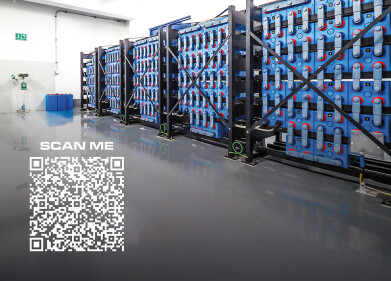Gas Detection
Hydrogen Gas Detection
Jul 11 2023
Hydrogen is a clear, odourless and colourless gas. It is the most simple and abundant element in the world and can be used as a pure gas (H2) or combined with numerous other substances to form compounds- many of which we heavily rely on today.
There are so many processes and labels for hydrogen, so it can be confusing what they refer to. Hydrogen labelled by colour refers to the hydrogen production methods used. In this blog post, we will focus on blue and green hydrogen as these are the most renowned methods of producing hydrogen. However, hearing of grey, brown, yellow, turquoise, or even pink hydrogen is not uncommon.
Blue Hydrogen
Blue hydrogen is produced from natural gasses via steam methane reforming (SMR). During the steam methane reforming process, natural gas and very hot steam are mixed with a catalyst. As a result of this mixing, hydrogen and carbon dioxide are formed. To have pure hydrogen, the CO2 is removed and stored somewhere else.
If hydrogen is produced with natural gas and the process incorporates carbon capture, utilisation and storage (CCUS), it can be considered low-carbon hydrogen.
The benefits of using blue hydrogen include:
Saves renewable energy: Because blue hydrogen is not produced with renewable energy, it reduces the amount of renewable energy that needs to be produced, or it can be saved for a more beneficial purpose.
Uses fewer scarce resources: As renewable energy production requires more land, it takes up more space. However, blue hydrogen production does not require such vast amounts of land.
Cost-effective: For the time being, green hydrogen is more expensive than blue, thus making blue hydrogen more cost-effective.
Green Hydrogen
Green hydrogen is produced by electrolysis by using a renewable energy source, such as water or wind, as the electrical current. As carbon dioxide is not emitted into the atmosphere during this process, it is the most efficient and clean energy available.
There are numerous benefits to using green hydrogen and we will list some of them below:
- 100% sustainable: As polluting gasses are not released into the atmosphere due to green hydrogen production, this makes it 100% sustainable.
- Storable: Hydrogen can be stored easily. This makes it suitable to be used in various amounts and at different times instead of as soon as it is produced.
- Versatile: Green hydrogen can be used for a variety of purposes as it can be transformed into electricity or synthetic gas.
International Gas Detectors and our Gas Detection solutions
When working with hydrogen, oxygen and other gases it is important to maintain the safety of staff, machinery and the environment which these gasses are present in. At International Gas Detectors Ltd, we provide a range of gas detectors for hydrogen, oxygen and more.
Check out this link below to find out more about our options for hydrogen.
Digital Edition
AET 28.4 Oct/Nov 2024
November 2024
Gas Detection - Go from lagging to leading: why investment in gas detection makes sense Air Monitoring - Swirl and vortex meters will aid green hydrogen production - Beyond the Stack: Emi...
View all digital editions
Events
Dec 02 2024 London, UK
Dec 03 2024 Dusseldorf, Germany
Dec 11 2024 Shanghai, China
Jan 12 2025 Abu Dhabi, UAE
Jan 14 2025 Abu Dhabi, UAE















.jpg)





